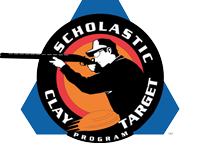Reloading for Trap, Skeet, and Sporting Clays: The Right Load
Contributed by Ron Reiber of Hodgdon Powder Co. This article originally appeared in the December 2014 issue of Inside SSSF. See the full issue of Inside SSSF.
Ask five shooters what is the right load for clay target shooting, and you will get five different answers. We are not talking about the components that go into the individual load, rather, how much shot, size of shot, and velocity of shot necessary to “always” break the clay target.
The truth is, more velocity and more shot are not the answers to the best loads. High velocity means many, many deformed shot at the bottom of the shot column as the shot starts down the barrel. The higher the velocity, the more deformed pellets. Those deformed pellets do not “buck” the air well, and become flyers that skew off in various directions, or slow down rapidly, lengthening the shot string. That means less shot on the clay target.
From years working in the ballistics laboratory and viewing shot strings on camera, I have come to see ideal patterns form in the velocity range of 1150 fps to 1200 fps. No matter if it is 1 1/8 oz., 1 oz., or 7/8 oz., patterns are best in this range.
How much shot is enough? It depends on the target, but it is a proven fact that no more than 24 grams or 7/8 oz. shot is necessary to cleanly break the most difficult trap targets thrown in competition, that being International Trap Competition. That game started with 1 1/8 oz. of shot and went to 1 oz. because scores were too high. Scores went up, so they decided to again drop the amount of shot to lessen scores. They went to 24 grams (approximately 7/8 oz.), and scores rose again!
What does that teach us? The lesser amount of shot is still more than adequate, but recoil has been significantly reduced, and we are better able to keep our heads on the stock, and thus produce better scores.
Now apply that concept to using the 1150 to 1200 fps velocity range to load our clay target loads, and we have produced the perfect reload with a shot string of optimum dimension. I tell shooters this is a 99% “head” game, and we need to believe in our gun, load, and ability to place the shot in the right spot! My motto regarding the load is, “It’s not how much you throw, but what you throw and how you throw it.”
If I were to start over shooting each of the clay target games mentioned above, I would not be loading 1 1/8 oz. loads, rather for comfort and keeping my head down for correct follow-through, I would load either 1 oz. or 7/8 oz., depending on what my gun patterned the best with the components I had available. The diameters of these patterns are the same as with 1 1/8 oz. but have shorter shot strings due to less shot set-back and less deformation, thereby having just as many pellets contacting the target as the heavier load. Why take the recoil when it is not necessary, and why not save the money on expensive lead shot, when less will do the same?
Load 100 rounds of 1 1/8 oz., 100 of 1 oz., and 100 of 7/8 oz. at the same velocity level, pattern them, and then shoot a couple rounds of trap, skeet, or sporting clays. Then see if your scores are not equal to or better than those shot with the heavier loads. Watch how they compare in how the targets break. I believe your scores will be better because you were more easily able to “stay in the gun,” especially for doubles. Less recoil and fatigue does not become a factor toward the end of the 100 rounds.
Arguably the greatest sporting clays shooter of all times, George Digweed, shot at 10 crossing targets at 100 yards with standard 1 oz., #7 ½’s, and broke 7 of the 10. He performed this phenomenal feat at the American Shooting Centers in Houston, TX, and it was witnessed by many. Case closed.
